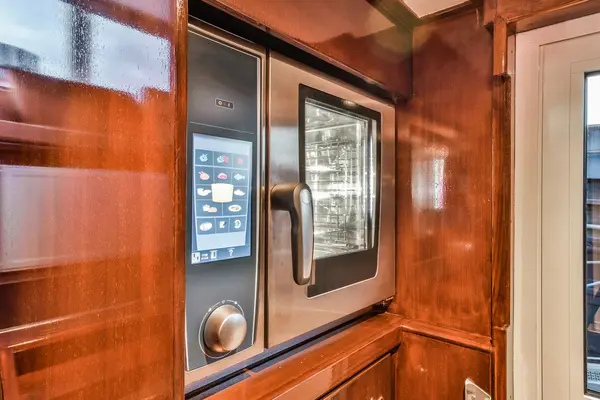Kitchen
Step-by-Step Guide to Installing a Vented Microwave

Why Install a Vented Microwave?
Installing a vented microwave improves air quality by eliminating smoke, steam, and odors. A well-vented kitchen ensures efficient airflow, making cooking more comfortable. This guide will help you install one properly.
Tools and Materials Needed
- 4-inch hole saw
- Angle grinder
- Anti-tip bracket
- Ductwork
- Duct louvers
- Electric drill
- Flexible elbow
- Level
- Mounting hardware
- Pilot bit
- Reciprocating saw
- Stud finder
- Vented microwave
Safety Precautions
Turn off power and gas before starting. If unsure about electrical or gas connections, consider hiring a licensed professional for assistance.
Step-by-Step Installation Guide
1. Remove the Old Appliances
Disconnecting the Gas Stove
- Turn off the gas supply.
- Disconnect the gas line.
- Unplug electrical connections.
- Carefully slide the stove out.
Removing the Old Microwave
- Unscrew mounting screws.
- Disconnect the power cord.
- Lift and remove the microwave.
2. Install the Mounting Bracket
- Locate wall studs using a stud finder.
- Mark the bracket hole positions.
- Drill pilot holes and secure the bracket.
3. Prepare the Cabinet Space
- Measure and mark the vent hole position.
- Use a hole saw to cut the vent opening.
- Install cabinet support structures if necessary.
4. Secure the Microwave
- Lift and align the microwave with the bracket.
- Secure it to the cabinet.
- Plug in the power cord.
5. Install the Venting System
Determine the Vent Path
Plan the vent path, avoiding structural obstacles.
Cutting the Vent Hole
- Mark the vent hole position on the exterior wall.
- Drill a pilot hole.
- Use a hole saw to complete the opening.
Attach the Ductwork
- Cut the ductwork to fit the vent outlet.
- Secure it to the microwave’s vent.
- Seal joints to prevent air leaks.
Install Duct Louvers
- Align louvers with the vent hole.
- Secure them tightly to prevent leaks.
6. Reconnect the Gas Stove (If Applicable)
Modify the Gas Line
Adjust fittings if necessary for proper clearance.
Connect the Gas Line
- Apply pipe thread compound to connections.
- Attach the flexible gas line.
- Tighten all connections.
Safety Check
Use a soap and water solution to detect gas leaks. If bubbles form, tighten connections or redo them.
7. Final Steps and Testing
Secure the Appliances
- Install an anti-tip bracket for the stove.
- Ensure the microwave is level and secure.
Test the Microwave
- Turn it on and check all functions.
- Ensure the vent fan works properly.
- Verify that air exhausts correctly.
Test the Stove
- Turn on the gas supply.
- Light burners to confirm functionality.
- Test oven operation.
8. Maintain Ventilation Efficiency
Regularly inspect the vent system to prevent airflow blockages. Keeping it clean ensures long-term efficiency.
Conclusion
Installing a vented microwave enhances kitchen ventilation, making cooking more enjoyable. Whether handling it yourself or hiring a professional, proper installation guarantees safety and effectiveness. Explore more home improvement tips on our website!
